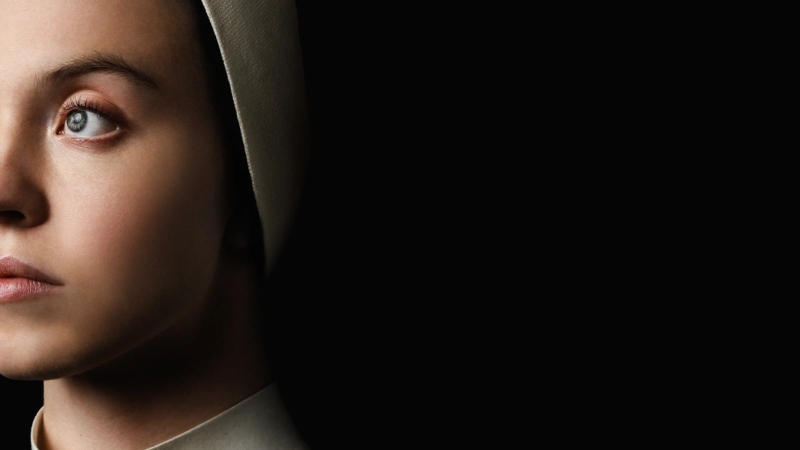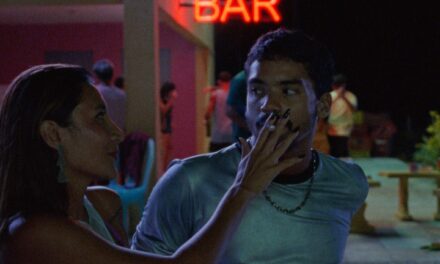In the history of cinema, horror and religion have always walked hand in hand, as contradictory as that may seem. The fact that the battle between good and evil is intertwined with humanity’s greatest fear—death—has allowed religion, with its dogmas and values, to be explored by horror for decades. This exploration analyzes the set of beliefs and fears imposed by the church itself, questioning societal conventions and taboos. It is within this realm of inquiries that a subgenre has been on the rise and proliferating abundantly in horror cinema over the past decade: the so-called “religious horror.”
Immaculate, directed by Michael Mohan, is the latest entry in this religious wave to gather both devout (or not) fans of the subgenre. It has all the necessary ingredients: one of the young stars of the moment, Sydney Sweeney, who starred in the romantic hit “Anyone But You” and the blockbuster “Madame Web”; a macabre setting perfect for creating scary images; and, of course, a well-rounded premise filled with influences from other classic films of the genre.
In the story, Sweeney plays Cecilia, a young woman who goes to an isolated convent in rural Italy to fulfill her vows to become a nun, only to discover strange secrets about the place and find herself facing a mysterious pregnancy.
GOOD ATMOSPHERE VS. LACKLUSTER SCRIPT
In theory, Immaculate promises interesting horror, but in practice, it is just another generic religious horror like many others released by the American market. It’s a pity because the opening scene, which draws from the Dutch cult classic The Vanishing, gives the audience the impression that something good and brutal will come in the psychological context, a situation that never materializes during the story.
I do appreciate the suspenseful atmosphere created by Michael Mohan, with a good sense of fear staged, using wide shots to position the audience in the ambiguous and uncomfortable landscape that Cecilia faces in her daily life at the convent, as if an evil being were watching her from a distance.
There is a clear influence of 1970s horror, evident in the sinister ambiance and visuals reminiscent of Dario Argento’s Suspiria and the setting of rooms filmed with suffocating framing that brings a vibe of Roman Polanski’s Rosemary’s Baby, not to mention the transgressive Christian iconography of Mario Bava’s major gothic works.
For fans of good avant-garde horror, there is an effective geographical reconstruction here, feeding on dark images to fuel its Catholic horror, with an instrumental soundtrack by Will Bates that enchants with the perverse beauty of using a children’s song to contextualize the feeling of strangeness. Moreover, the narrative itself is slower, much closer to films of that period, addressing Catholic iconography to evoke fear and giving a good finish to visual ideas.
It’s a shame that the debut script by Andrew Lobel turns out to be a collection of uninspired psychological clichés, overly reliant on generic jump scares. The lack of development of Cecilia’s dramas and dilemmas is evident, as is the way the novice interacts with the horror, losing its way with situations inserted lazily into the text, without any concern for building fear in favor of the story. The impression is that all the visual exposure becomes empty due to the superficial exploration of the Catholic theme and all the horror the film seeks to discuss about religion, power, and institutionalized abuses.
CONTROVERSIAL ENDING FOR A STANDARD FILM
It is worth noting that Immaculate only made it to the screen thanks to its star Sydney Sweeney. She auditioned for the film ten years ago when she was 16, but the project was shelved all this time until the actress, through her production company, bought the rights to film it. She brought in Mohan, with whom she worked on the thriller The Voyeurs (available on Prime Video), and gave the green light to start production.
In a way, looking at Lobel’s script, it’s easy to see the actress’s interest in it: there are pertinent issues related to femininity, such as patriarchal control and the oppression exerted by religion over female nature regarding their choices and decisions. Thanks to Sweeney, the film becomes credible due to her dedicated performance, which gains more strength in the final act.
Speaking of which, it is curious that the production presents a bold ending, with a fine performance by Sydney that, in some parts, resembles Isabelle Adjani’s emotionally intense performance in the cult classic Possession, while the rest of the film is punctuated by a narrative on autopilot, with many stiff situations.
In the end, it is clear that Immaculate gets lost in its own indecision, whether it wishes to adhere to the concept of more brutal psychological horror in discussing Christian attire (Cecilia’s journey and pregnancy echo the Virgin Mary) within its belief or follow the traditional formula of commercial horror films outlined by easy scares. Thus, the oscillating narrative lacks the strength to match the provocative conclusion, which touches on a very controversial theme in the eyes of the church and today’s society.
It is as if, by trying to reach two different audiences (one commercial and one cult), Immaculate disconnects from its initial proposal of being a distinct atmospheric horror, turning into a generic entertainment piece that leaves more gaps in answers and discussions than its ambitious premise proposes.



















